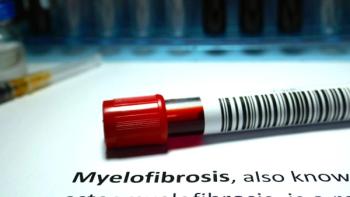
- Rare Cancers Special Issue
- Volume 1
- Issue 1
Studying Rare Diseases Is Difficult, But Innovation Drives Results
Where does hope lie when it comes to improving the treatment landscape for rare cancers?
People affected by rare cancers can face many frustrations: initial misdiagnosis, difficulty finding a specialist to provide treatment and a feeling of isolation.
But perhaps their biggest concern surrounds the limited treatment options for some rare cancers.
The problem stems from the fact that rare tumor types are difficult to study. Because relatively few patients have these diseases, most data comes from individual case reports, as opposed to controlled clinical trials of larger groups. Furthermore, fewer experts are focused on studying these illnesses because they’re not as common.
So, where does hope lie when it comes to improving the treatment landscape for rare cancers?
A trend toward treating cancers based on the genetic mutations that drive them, rather than on where they originate in the body, is likely to improve the care available for people with these rare diseases. For instance, several immunotherapy drugs have been approved to treat any cancer with a mismatch repair deficiency, which means the tumor’s DNA has trouble repairing itself when damaged. Some rare cancers, such as rhabdomyosarcoma (tumor of the muscle) and acinar cell sarcoma (a rare pancreatic malignancy), have this defect in common with more prevalent oncologic diseases, including some colorectal, breast, prostate and bladder cancers, and can be treated with the same immunotherapies. Similarly, as we discuss in a feature in this issue of CURE ®, NTRK gene fusions can drive both rare and common cancers, and a single targeted drug is now available to treat any recurrent cancers that express this aberration.
Other innovative mechanisms, too, will contribute to progress in treating rare tumors. Patient registries, like the one devoted to myeloproliferative neoplasms that is mentioned in this issue, are expected to help. These registries allow patients to contribute both self-reported and clinical information for analysis. Because these efforts don’t require patients to travel or meet stringent clinical trial eligibility standards, they can bring together information about a relatively large number of people with a rare disease, accelerating research into the condition. Health care technology companies that aggregate data from electronic medical records are also being leveraged to analyze commonalities among rare tumors to identify possible vulnerabilities that could lead to new therapies.
When it comes to drug development, the rare cancer community is homing in on small biotechnology companies, which sometimes carve out a role for themselves by choosing a narrow focus and developing niche drugs. In addition, there is some motivation for larger pharmaceutical firms to develop treatments for rare cancers: Under the Food and Drug Administration’s policy on orphan drugs, drugmakers can receive financial incentives that make it more feasible to develop medicines for patient groups of 200,000 people or less.
Not to be overlooked: the importance of grassroots efforts in driving progress. Patient advocacy groups can influence or even contribute to rare disease research and drug development. And, backed by these organizations, individual patients can become great advocates and rise to the occasion by educating the public, raising funds and lobbying for advancement and change. This is a powerful course of action that patients, survivors and caregivers can take, if not to change their own health outcomes, then to help those who will need treatment in the future.
Articles in this issue
over 6 years ago
New Therapies Making Progress in Rare Cancersover 6 years ago
Making It Personal With Waldenstrom's Macroglobulinemiaover 6 years ago
Hormones Gone Mad in a Rare Type of Ovarian Cancerover 6 years ago
The Truth About Implantsover 6 years ago
Seeking Immunity: Exploring Kaposi's Sarcomaover 6 years ago
Blowing a Fuse: Fighting NTRK Gene Fusions in Cancerover 6 years ago
A Rare Opportunity for Patients With Brain and Spinal Cancers




